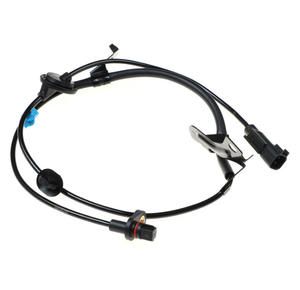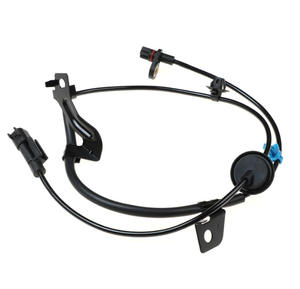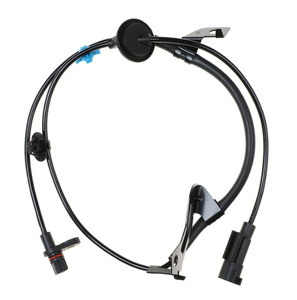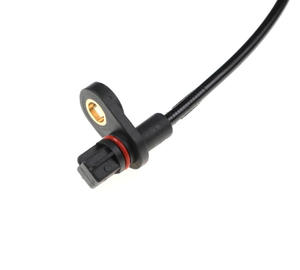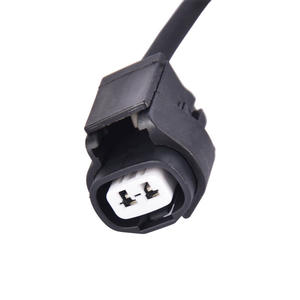Types of Scion xB Auto Parts
Scion xB auto parts are specialized components designed for Toyota's compact vehicle model that was produced from 2004 to 2015. The boxy, urban-styled Scion xB gained popularity for its unique design, spacious interior, and customization potential. Understanding the various part categories is essential for both repair and performance enhancement.
Engine Components
- Pistons & Connecting Rods
- Cylinder Heads
- Valve Covers
- Timing Chains & Belts
- Camshafts
- Engine Mounts
Critical for: Vehicle performance, power output, and fuel efficiency
Cooling System
- Radiators
- Thermostats
- Water Pumps
- Cooling Fans
- Coolant Reservoirs
- Radiator Hoses
Critical for: Temperature regulation and preventing engine damage
Electrical System
- Batteries
- Fuses & Relays
- Wiring Harnesses
- Alternators
- Starters
- Sensors & Modules
Critical for: Starting, charging, and operating vehicle electronics
Body & Interior
- Doors & Door Handles
- Bumpers & Fenders
- Hoods & Tailgates
- Seats & Upholstery
- Dashboard Components
- Trim & Moldings
Critical for: Aesthetics, comfort, and protection
Transmission
- Clutch Assemblies
- Transmission Fluid
- Shifter Assemblies
- Axles & CV Joints
- Gears & Bearings
- Torque Converters
Critical for: Power transfer from engine to wheels
Suspension & Steering
- Control Arms
- Ball Joints
- Tie Rods
- Shock Absorbers
- Struts & Springs
- Power Steering Components
Critical for: Handling, stability, and ride comfort
Expert Tip: When upgrading Scion xB parts, consider the model year carefully. First-generation (2004-2006) and second-generation (2008-2015) xB models have significant differences in their components and specifications. Always verify compatibility before purchasing.
Specifications of Scion xB Auto Parts
Understanding the technical specifications of Scion xB components is essential for proper maintenance and optimal performance. Below are the key specifications for major systems in the Scion xB:
| Component | First Generation (2004-2006) | Second Generation (2008-2015) |
|---|---|---|
| Engine | 1.5L 4-cylinder (108 hp, 105 lb-ft) | 2.4L 4-cylinder (158-178 hp, 162-172 lb-ft) |
| Transmission | 5-speed manual or 4-speed automatic | 5-speed manual or 4-speed automatic |
| Chassis | Unibody construction (2,450 lbs) | Unibody construction (3,020 lbs) |
| Suspension (Front) | MacPherson strut | Independent with stabilizer bar |
| Suspension (Rear) | Torsion beam | Trailing arm with coil springs |
| Brakes (Front) | 10.0-inch ventilated disc | 10.8-inch ventilated disc |
| Brakes (Rear) | 8.0-inch drum | 9.0-inch drum |
| Tires | 185/60R15 | 205/55R16 |
OEM vs. Aftermarket Parts
Scion xB owners have two main options when selecting replacement parts:
- OEM (Original Equipment Manufacturer): Made by Toyota or its suppliers, these parts offer exact fit and function but at a higher price point.
- Aftermarket: Made by third-party manufacturers, these parts offer greater variety, potential performance improvements, and often lower prices, but with varying quality levels.
Decision factor: Balance between cost, reliability, and performance needs
Performance Upgrades
Popular performance enhancements for the Scion xB include:
- Cold Air Intakes: Can improve horsepower by 5-10 HP
- Performance Exhaust: Can add 3-7 HP while improving sound
- ECU Tuning: May increase power by 5-15% when combined with other upgrades
- Suspension Kits: Improve handling and reduce body roll
Important note: Some modifications may affect warranty or emissions compliance
Maintenance of Scion xB Auto Parts
Proper maintenance extends the life of Scion xB components and ensures reliable performance. Follow these recommended maintenance schedules and procedures:
Maintenance Interval Chart
Engine Maintenance
- Oil Changes: Every 5,000 miles using 5W-30 synthetic oil (first gen) or 0W-20 synthetic oil (second gen)
- Timing Chain/Belt: Inspect at 60,000 miles, replace if showing wear
- Spark Plugs: Replace every 60,000 miles with manufacturer-specified iridium plugs
Transmission Maintenance
- Manual Transmission: Fluid check every 30,000 miles, replace if discolored
- Automatic Transmission: Fluid and filter replacement every 60,000 miles
- Clutch (Manual): Inspect for slippage every 30,000 miles
Brake Maintenance
- Brake Pads: Inspect every 10,000 miles, replace when less than 3mm thick
- Brake Fluid: Flush and replace every 30,000 miles or 2 years
- Rotors/Drums: Measure thickness during pad replacement, replace if below minimum specs
Maintenance Tip: When replacing coolant in your Scion xB, use Toyota Super Long Life Coolant (pink) or equivalent. Using incorrect coolant types can lead to reduced cooling efficiency and potential corrosion in the cooling system.
How to Choose Scion xB Auto Parts
Selecting the right parts for your Scion xB requires careful consideration of multiple factors to ensure compatibility, quality, and value. Follow these guidelines to make informed purchasing decisions:
| Selection Factor | Importance | Key Considerations |
|---|---|---|
| Compatibility | Critical | Verify exact model year and trim level; first and second generation xB parts are rarely interchangeable |
| Quality | High | Choose OEM parts for critical systems; consider reputable aftermarket brands for non-critical components |
| Supplier Reputation | High | Research vendor ratings and reviews; established Toyota dealerships and specialized auto parts retailers typically offer reliable products |
| Warranty | Medium | Compare warranty terms; OEM parts typically offer 12-month coverage, while aftermarket warranties vary widely |
| Price | Medium | Balance cost against quality; lowest price options often sacrifice durability or performance |
| Availability | Medium | Consider lead time for specialized parts; maintain common replacement items for emergency repairs |
| Environmental Impact | Optional | Consider remanufactured parts for reduced environmental footprint; verify compliance with emissions regulations |
Part Sourcing Strategy
Develop a multi-tiered approach to sourcing Scion xB parts:
- Critical Components: Source from Toyota dealerships or certified parts retailers (engine, transmission, safety systems)
- Moderate Priority: Consider high-quality aftermarket options from established brands (suspension, cooling system)
- Low Priority: Explore cost-effective alternatives for non-critical items (interior trim, cosmetic elements)
Cost-Saving Tips
Maximize value when purchasing Scion xB parts:
- Compare Multiple Suppliers: Prices can vary significantly between vendors
- Consider Remanufactured Parts: Often 30-50% less expensive than new components
- Join Scion Forums: Members frequently share deals and supplier recommendations
- Buy in Kits: Complete assemblies often cost less than individual components
Warning: Be cautious of counterfeit parts, particularly when purchasing online from unfamiliar sources. Counterfeit components may appear identical to genuine parts but lack proper materials and quality control, potentially causing premature failure and safety risks.
DIY Replacement of Scion xB Auto Parts
Many Scion xB owners prefer to handle repairs and maintenance themselves. With the right tools and knowledge, DIY replacement can save money while ensuring quality work. Follow these step-by-step guides for common replacements:
Preparing for DIY Replacement
For most Scion xB repairs, you'll need basic metric tools including socket sets (8mm-19mm), wrenches, screwdrivers (Phillips and flathead), pliers, and trim removal tools. Specialized projects may require additional tools such as torque wrenches or OBD-II scanners.
Before beginning any repair, consult the factory service manual, online forums (ScionLife, xBForum), or video tutorials specific to your xB generation. Document part numbers, torque specifications, and special procedures to ensure proper installation.
Park on a level surface, engage the parking brake, and use wheel chocks. For electrical work or airbag-related repairs, disconnect the battery and wait at least 10 minutes for system discharge before proceeding.
For electrical components, always disconnect the negative battery terminal first, then the positive. This prevents short circuits and potential damage to electrical systems or unintended airbag deployment.
Common DIY-Friendly Replacements
- Air Filter: Located in airbox on driver's side, accessible via clips (15 min)
- Cabin Filter: Behind glove box, requires removal of stop-arms (20 min)
- Brake Pads: Requires jack, stands, lug wrench, and basic tools (1-2 hours)
- Spark Plugs: Accessible under engine cover with spark plug socket (30-45 min)
- Oil Change: Requires oil filter wrench, drain pan, and jack (30 min)
Projects Requiring More Experience
- Alternator Replacement: Requires belt tensioner manipulation (2-3 hours)
- Starter Motor: Limited access, multiple electrical connections (2-3 hours)
- Clutch Replacement: Requires transmission removal (6-8 hours)
- Timing Chain/Belt: Critical engine timing must be maintained (4-6 hours)
- Suspension Components: May require alignment after installation (varies)
DIY Safety Tip: When working under your Scion xB, always use proper jack stands rated for your vehicle's weight. Never rely solely on a hydraulic jack to support the vehicle, as they can fail unexpectedly and cause serious injury or death.
Post-Replacement Procedures
Before final reassembly, test the component's functionality. For mechanical parts, check for proper movement and alignment. For electrical components, verify connections and test operation.
Follow the disassembly steps in reverse order, ensuring all clips, fasteners, and connectors are properly secured. Use torque specifications when tightening critical bolts.
Dispose of old components according to local regulations. Many auto parts stores accept used batteries, oil, and filters for recycling. Metal components can often be recycled at scrap yards.
Maintain a vehicle maintenance log with details of all replacements including part numbers, dates, and mileage. This documentation helps track maintenance history and can increase resale value.
Frequently Asked Questions
A: No, significant differences exist between first-generation (2004-2006) and second-generation (2008-2015) Scion xB models. Many components are not interchangeable between generations due to different dimensions, engine specifications, and electrical systems. Even within the same generation, minor variations can exist between model years. Always verify compatibility with your specific model year and trim level before purchasing parts.
A: Proper disposal of used Scion xB parts is important for environmental responsibility:
- Fluids (oil, coolant, brake fluid): Must be recycled at authorized collection centers or auto parts stores that accept used fluids
- Batteries: Should be recycled at battery retailers or hazardous waste facilities (many offer core credit for returns)
- Metal components: Can be recycled at scrap metal facilities
- Electronic components: Should be taken to e-waste recycling centers to prevent environmental contamination
Many service centers and auto parts retailers offer recycling programs for common components. Check with local environmental agencies for specific disposal requirements in your area.
A: Some Scion xB components are shared with other Toyota models, but compatibility varies:
| Compatible Models | Shared Components | Notes |
|---|---|---|
| Toyota Matrix (2003-2008) | Some engine components, suspension parts | First-gen xB compatibility only |
| Toyota Corolla (2009-2013) | 2.4L engine components, some electronics | Second-gen xB compatibility only |
| Toyota Yaris (2007-2011) | Limited electrical components | Verify specific part numbers |
| Scion tC (2005-2010) | Some interior trim, electronics | Fitment may require modifications |
Using incompatible parts can lead to fit issues, performance problems, and potentially void warranties. Always verify cross-compatibility through manufacturer documentation or consult with a qualified Toyota technician before attempting to use xB parts in other vehicles.
A: While Scion xB vehicles are generally reliable, these components tend to require attention more frequently:
- Water pump: Typically fails between 80,000-100,000 miles, especially in first-generation models
- Valve cover gaskets: May develop leaks around 70,000 miles
- Front struts/mounts: Can wear out by 60,000 miles depending on driving conditions
- Power steering pump: Common issue in second-generation models with higher mileage
- Oxygen sensors: May trigger check engine lights around 100,000 miles
Preventive maintenance and early intervention when symptoms appear can help avoid more serious and costly repairs down the line.


























